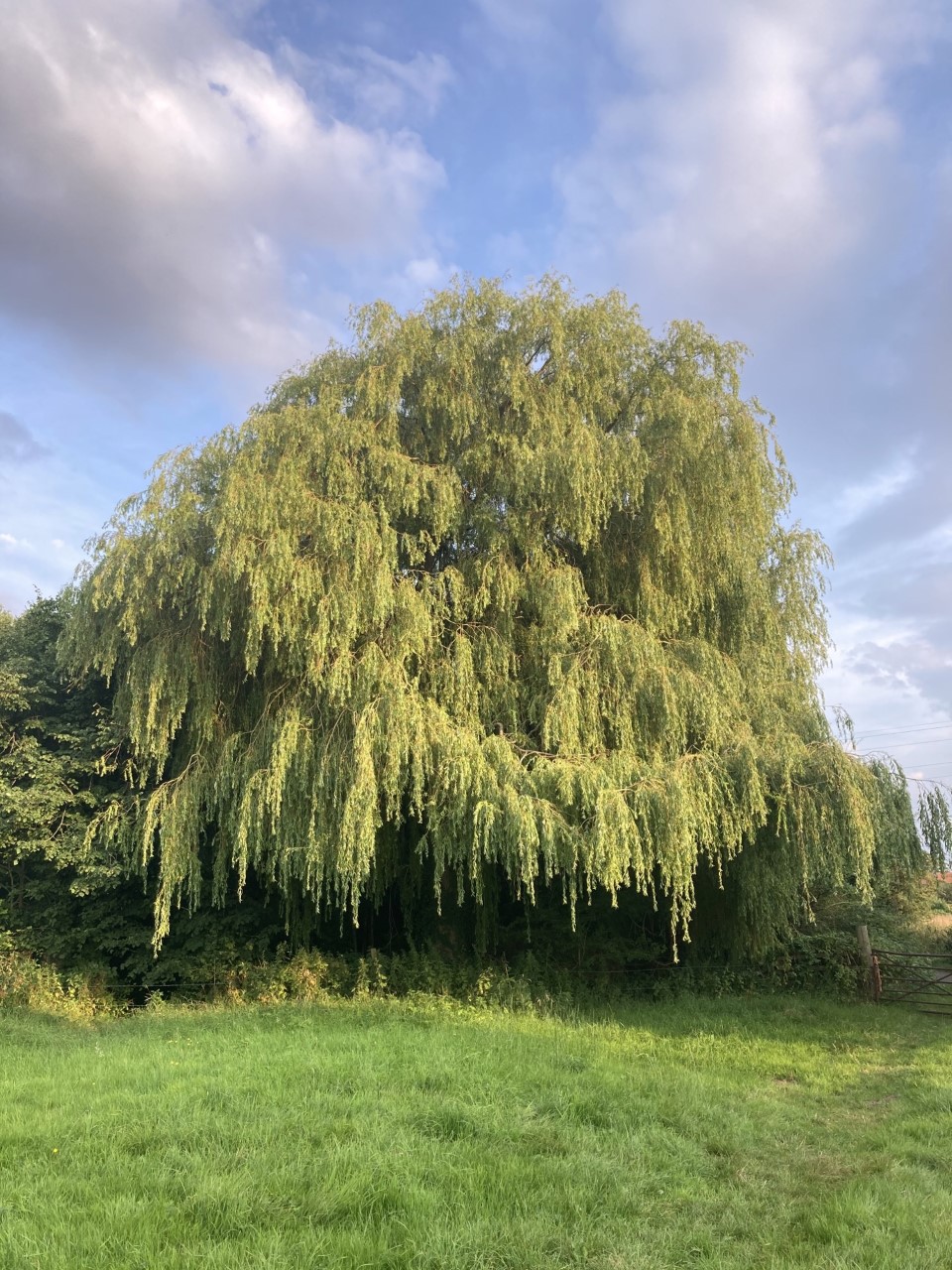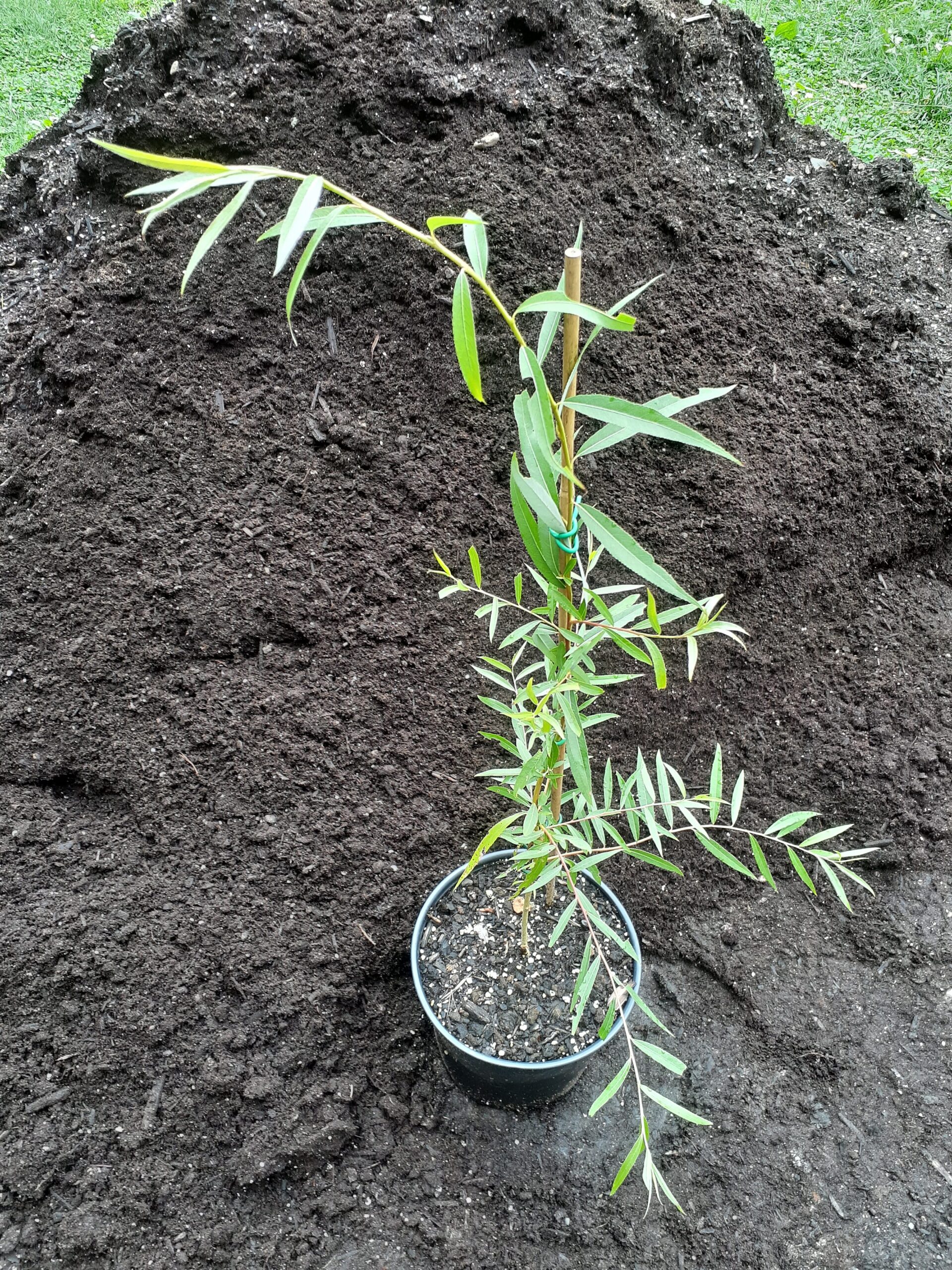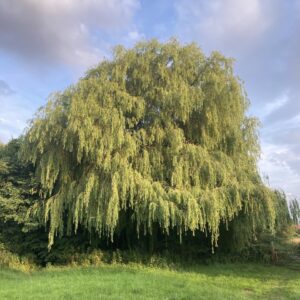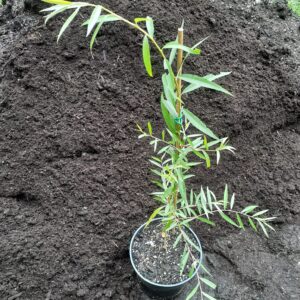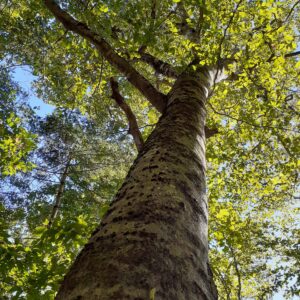Weeping Willow
(Golden Weeping Willow)
Salix ‘Chrysocoma’
Like all willow species, the Weeping Willow leafs-out early, thrives on wet sites and grows very fast. A classic large, broad tree that is likely a hybrid between the Salix Alba and Salix Babylonica. Bright green, lance-shaped leaves alternate on long, drooping golden-yellow branchlets that can reach the ground. Often found growing naturally on riversides and very frequently planted for its ornamental beauty. Male and female flowers appear early on separate trees and provide an early source of nectar for bees and other insects. Tiny, cottony seeds emerge from seed capsules on female trees in mid-summer and are blown for miles on the breeze.
Additional information
| Foliage | Deciduous |
|---|---|
| Locale | Native to Asia, Native to Europe |
| Height | Large (60-100ft) |
| Width | Wide |
| Form | Broad, Weeping |
| Growth Rate | Fast |
| Longevity | Short (under 50 years) |
| Hardiness Zones * | 4, 5 |
| Sun Exposure | Full Sun (over 6 hrs), Partial Sun (4 to 6 hrs) |
| Soil Preferences * | Slightly Acidic, Well Draining, Wet |
| Soil Tolerances | Clay, Slightly Alkaline |
| Other Tolerances | Occasional Flooding, Road Salt |
| Ornamental Interest | Form, Leaves (shape) |
| Wildlife Value | Bees (flowers), Birds (fruits/seeds), Butterflies (flowers), Butterfly Larvae (leaves), Insect Pollinators (flowers) |
| Human Value | Carpentry (wood) |
| Seed Collection | Grown from Cuttings |
| Planting Considerations | Intolerant of Drought, Intolerant of Full Shade, Plant away from Sewer Pipes, Prone to Ice Damage, Prone to Wind Damage, Shallow Roots |


